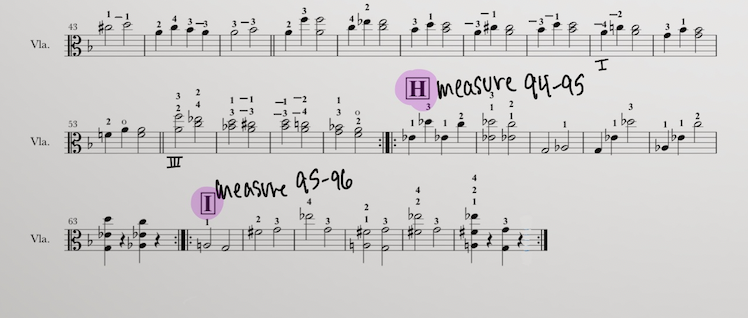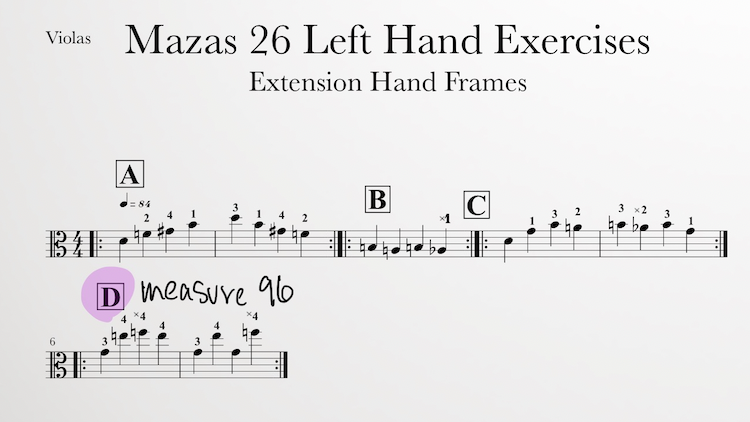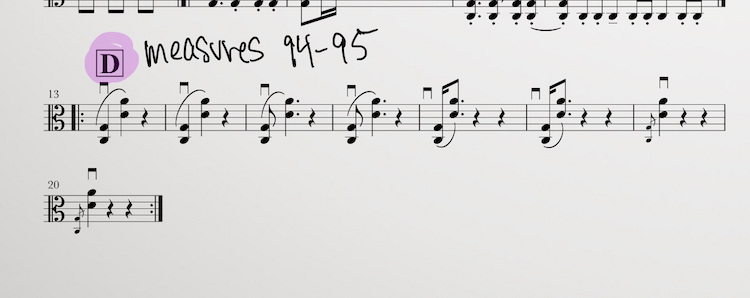IN THIS LESSON
PHRASE 10
MEASURES 94-97
This short section is the pinnacle of drama in the etude.
The first chord is a long dissonance, which rings through a rest before it resolves to a shorter chord on the downbeat of measure 95. The next beat immediately features another longer dissonant chord, which also rings through a rest before it resolves on a shorter chord.
After resolving on the downbeat of measure 96, we immediately take off on an up-bow staccato descending scale, which sounds to me like a laugh. It is joyful and fun, a huge relief after these dramatic chords!
General practice methods:
Ensure this whole phrase sounds beautiful, round, and resonant.
Make sure your retakes between chords are in circles that return above the string, so you can relax into the string gently for the next chord, as opposed to approaching from too low and having a crunch to the sound.
Use Double Stop exercises H and I for intonation in doublestops.
Use Bow Double Stop Exercise D to practice rolling, but modify this to be 2+2 on G+D and D+A. Substitute in our notes in these measures into the 2+2 exercise to find the best balance and timing of the two sets of notes.
Use Left Hand Extension exercise D to practice reaching from 3rd finger G to the 4th finger F in measure 96.
Use On-the-String Bow exercise E to practice up-bow staccato for measure 96.
Breaking Down the Phrase & Reference Guide to Previous Exercises:
Measure 94:
G-Eb-Db is a long, quarter-note length chord. The notes are intentionally dissonant, so practice these notes separately to be sure you have placed them all in tune, using Double-Stop Exercise H (which continues to tune the downbeat of measure 95).
Use a long, sustained bow on this chord so that the chord will ring through the rest.
Measure 95:
Ab-Eb-C on the downbeat is a shorter, eighth note length chord. This should sound resonant and like a relief after the last clashing chord.
Use a fast, light bow on this chord.
A-F#-Eb on beat 2 is a long, quarter-note length chord. This chord is also dissonant, so practice these notes separately to place them all in tune using Double-Stop Exercise I (which continues to tune the downbeat of measure 96).
Use a long, sustained bow on this chord so that the chord will ring through the rest.
Measure 96:
Play a fast, light downbeat, traveling to the upper half of the bow to make room for the up-bow staccato that follows.
While keeping the 3rd finger down on G, extend the 4th finger to reach F.
The up-bow-staccato should sound fun and released, like a laugh.
-
Add a short summary or a list of helpful resources here.




